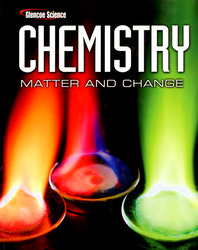1 2 + I2 <–> 2HIA) Keq = [HI]2/[H2 ][I2 ] B) Keq = [H2 ][I2 ]/ [HI]2 C) Keq = [HI]2/[H]2[I]2 D) Keq = [2HI]/ /[H2 ][I2 ] 2 A) the forward reaction has stopped B) the reverse reaction has stopped C) both the forward and reverse reactions have stopped D) neither the forward nor the reverse reaction has stopped 3 4 NO3 (s) → 2NH3 (g) + 2NO(g) + H2 (g) + 2O2 (g)A) Keq = [NH3 ][NO][H2 ][O2 ] B) Keq = [NH3 ]2[NO]2[H2 ][O2 ]2 C) Keq = ([NH3 ][NO][H2 ][O2 ])/[NH4 NO3 ] D) Keq = ([NH3 ]2[NO]2[H2 ][O2 ]2)/[NH4 NO3 ]2 4 <a onClick="window.open('/olcweb/cgi/pluginpop.cgi?it=jpg::::/sites/dl/free/007874637x/514713/figure_17_6_page_599_2008_CMC.jpg','popWin', 'width=405,height=309,resizable,scrollbars');" href="#"><img valign="absmiddle" height="16" width="16" border="0" src="/olcweb/styles/shared/linkicons/image.gif"> (55.0K)</a> A) both B) neither C) left flask only D) right flask only 5 eq at 298 K for the reaction shown below is 4.6 x 10-31 . What does this small value of Keq mean?2 (g) +O2 (g) yields 2NO(g)A) Almost all nitrogen and oxygen react to form NO. B) Almost no nitrogen and oxygen react to form NO. C) The reaction is impossible. D) The reaction happens very quickly. 6 A) only more H2 O to form B) only more CO to form C) more H2 O and CO to form D) only more CO2 to form 7 2 (g) + O2 (g) → 2SO3 (g) at equilibrium, what will be the effect on the net amount of SO3 present if the volume of the container is increased?A) The concentration of SO3 will increase. B) The concentration of SO3 will decrease. C) The concentration of SO3 will remain the same. D) This question cannot be answered without knowing the value of Keq . 8 2 (g) + ½O2 (g) → SO3 (g), ΔH° = -1.6 × 102 kJ for the forward reaction. To increase the yield of SO3 , the reaction should be run at ________.A) high pressure and high temperature B) high pressure and low temperature C) low pressure and high temperature D) low pressure and low temperature 9 2 (g), which of the following will shift the reaction to the left?A) add a catalyst B) heat the reaction vessel C) decrease the volume of the container D) add more NOCl 10 2 (g) yields CH4 (g) +H2 O(g), why does increasing the pressure shift the reaction to the right.<a onClick="window.open('/olcweb/cgi/pluginpop.cgi?it=jpg::::/sites/dl/free/007874637x/514801/fig17_13.jpg','popWin', 'width=NaN,height=NaN,resizable,scrollbars');" href="#"><img valign="absmiddle" height="16" width="16" border="0" src="/olcweb/styles/shared/linkicons/image.gif"> (42.0K)</a> A) Increased pressure increases the temperature. B) Increased pressure drives the molecules closer together. C) Fewer moles on the right counteracts increased pressure. D) Fewer moles on the right increases pressure. 11 3 is 9.0 x 10-5 M at 25°C. What is the solubility product constant, Ksp , for BaCO3 ?A) 1.2 x 10-8 B) 8.1 x 10-9 C) 5.3 x 10-12 D) 4.0 x 10-15 12 3 in water at 25°C, what will be [Cl- ] when precipitation of AgCl begins? The Ksp for AgCl is 1.8 x 10-10 .A) 1.0 x 10-10 M B) 1.3 x 10-6 M C) 1.8 x 10-8 M D) 1.8 x 10-12 M 13 2 will dissolve in 150 mL of 0.100M NaF solution? Ksp for MgF2 is 6.4 x 10-9 .A) 6.4 x 10-7 g B) 4.1 x 10-6 g C) 1.0 x 10-5 g D) 6.0 x 10-6 g 14 sp at 298 K, then calculate the molar solubility of PbSO4 .<a onClick="window.open('/olcweb/cgi/pluginpop.cgi?it=jpg::::/sites/dl/free/007874637x/514801/tab17_3.jpg','popWin', 'width=NaN,height=NaN,resizable,scrollbars');" href="#"><img valign="absmiddle" height="16" width="16" border="0" src="/olcweb/styles/shared/linkicons/image.gif"> (48.0K)</a> A) 1.6 x 10-4 M B) 3.2 x 10-4 M C) 4.8 x 10-4 M D) 6.4 x 10-4 M 15 3 . Will a precipitate form? Ksp for AgI is 8.5 x 10-17 .+ (aq) + I- (aq)A) 0.01, a precipitate will form B) 0.0025, a precipitate will form C) 0.01, a precipitate will not form D) 0.0025, a precipitate will not form.





